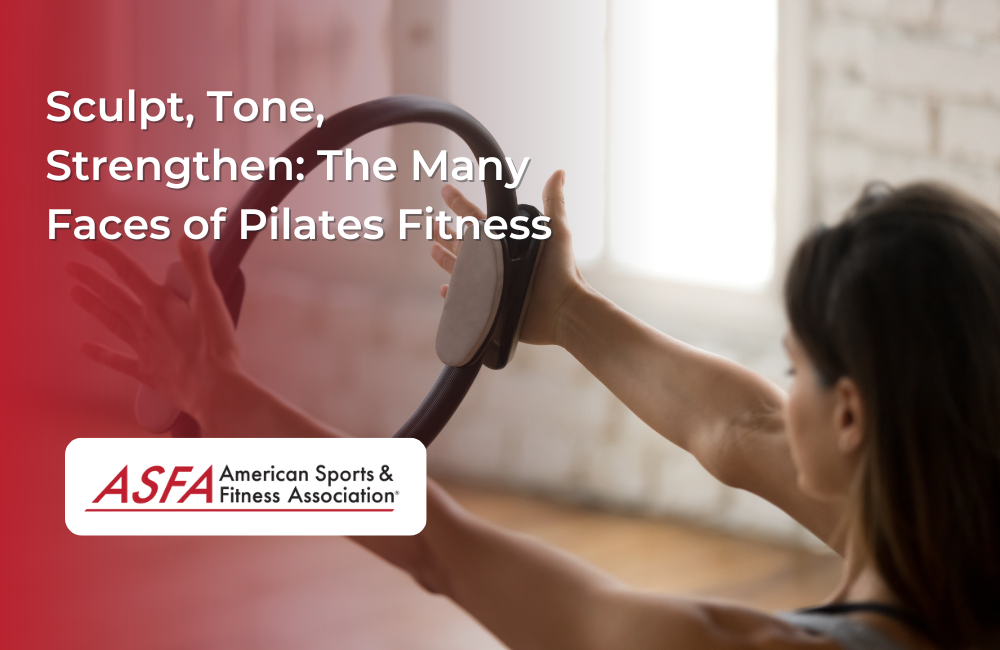
Sculpt, Tone, Strengthen: The Many Faces of Pilates Fitness
Pilates—the word is almost as familiar as yoga and has become a mainstream form of exercise. You'll find it in gyms everywhere and read about it in magazines, but do you know how Pilates works or what makes it different from other forms of exercise?
Pilates is not just an exercise craze, it is also a recognized method of rehabilitation from injury.
Pilates is not just an exercise craze, it is also a recognized method of rehabilitation from injury. The roots of Pilates date back to the early 20th century, when Joseph Pilates developed his own method as a way to help dancers improve their performance. Pilates exercises rely heavily on core strength and flexibility--two things that are often lacking in today's sedentary lifestyle.Pilates can be used as both an exercise routine and a form of physical therapy for those recovering from an injury or surgery who want to increase their range of motion without putting stress on fragile tissue. It can also help those with chronic pain issues such as osteoarthritis (OA), fibromyalgia, and spinal stenosis manage their symptoms while improving fitness levels overall by strengthening muscles without causing excess strain on joints or ligaments surrounding themPilates exercises rely heavily on core strength and flexibility.
Pilates exercises are designed to strengthen the core muscles. The core muscles are the ones that help you maintain good posture, which is important for everyday activities like walking and sitting up straight. They're also important for balance, allowing you to keep your body upright when doing things like standing on one foot or dancing in place. Pilates can improve your posture and balance, as well as strengthen these crucial muscles so they hold up under pressure during sports performances or everyday tasks such as carrying groceries or picking up children (or puppies).Pilates uses a combination of resistance training with stretches to work all parts of your body while also focusing on flexibility in certain areas--especially those related directly to core strength: hips/glutes/thighs/ankles; lower back/chest/shoulders; upper arms/triceps/biceps...There are many benefits to practicing Pilates regularly, including improved posture and coordination, stronger muscles and ligaments, and a better breathing technique.
Today there are many different types of classes available at gyms across the country; these include mat classes where you lie on your back while doing controlled movements with your arms and legs; reformer classes where you sit on a special machine while performing various exercises; chair-based sessions where participants use chairs instead of mats or reformers; ballet barre workouts (which focus more on stretching than strength training) and Suspension Training which uses straps hung from the ceiling or walls instead of weights.
Each exercise targets multiple muscles at once through controlled movements that require strength, coordination, and flexibility
Learning to do Pilates can make you stronger, healthier, and more flexible
Pilates is a form of exercise that focuses on strengthening and lengthening the body's core muscles. Pilates can help you improve your posture, breathing, and balance. It also improves coordination and flexibility.
Pilates exercises are done on a mat or with special machines called reformers; they rely heavily on the core muscles in the abdomen, back, and buttocks area (the "powerhouse"). Most people who practice Pilates report feeling stronger after just one session!
If you're looking to improve your overall health through exercise, then consider adding Pilates to your routine!
Here are a few examples of exercises done in Pilates:
- Hundred: Lie on your back with your knees bent, feet flat on the floor. Lift your head, neck, and shoulders off the mat. Extend your arms alongside your body, palms facing down. Pump your arms up and down as you inhale for 5 counts and exhale for 5 counts. Repeat for 10 cycles.
- Roll-Up: Lie on your back with your legs extended and arms overhead. Inhale, then exhale as you peel your spine off the mat, one vertebra at a time, reaching towards your toes. Inhale as you roll back down to the starting position. Repeat for 8-10 repetitions.
- Single Leg Stretch: Lie on your back with your legs bent, shins parallel to the floor. Lift your head, neck, and shoulders off the mat. Bring one knee towards your chest and extend the other leg out straight. Switch legs, pulling the other knee in and extending the opposite leg. Continue alternating while maintaining a stable core. Repeat for 8-10 repetitions on each side.
- Swan: Lie on your stomach with your hands placed under your shoulders. Press your hands into the mat to lift your upper body while keeping your legs grounded. Lengthen through your spine as you lift your chest and gaze forward. Lower back down with control. Repeat for 6-8 repetitions.
- Side Plank: Start by lying on your side with your forearm on the mat, elbow directly under your shoulder. Lift your hips off the mat, creating a straight line from head to toe. Engage your core and hold the position for 20-30 seconds. Repeat on the other side.
Remember, Pilates exercises can be modified to match your fitness level and any pre-existing conditions. It is always recommended to consult with a certified Pilates instructor before attempting new exercises.
Conclusion
Pilates is a great way to improve your overall fitness and health. It can be done at home or in a studio, so it's convenient for everyone. If you want to learn more about this form of exercise, we encourage you to research what other people have said about their experiences with Pilates classes or DVDs at home. You may even find that some of them offer free trial periods so you can try out their classes before committing yourself.



